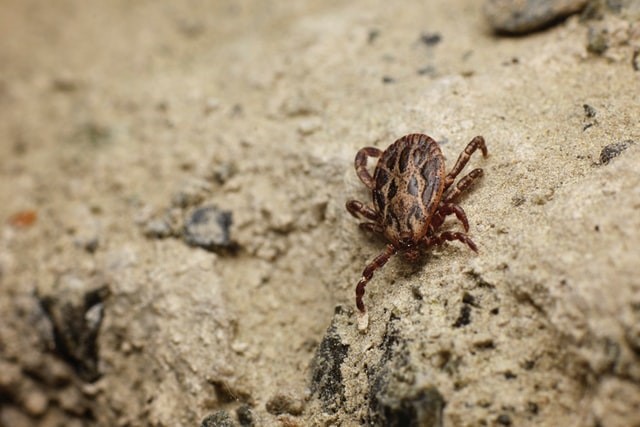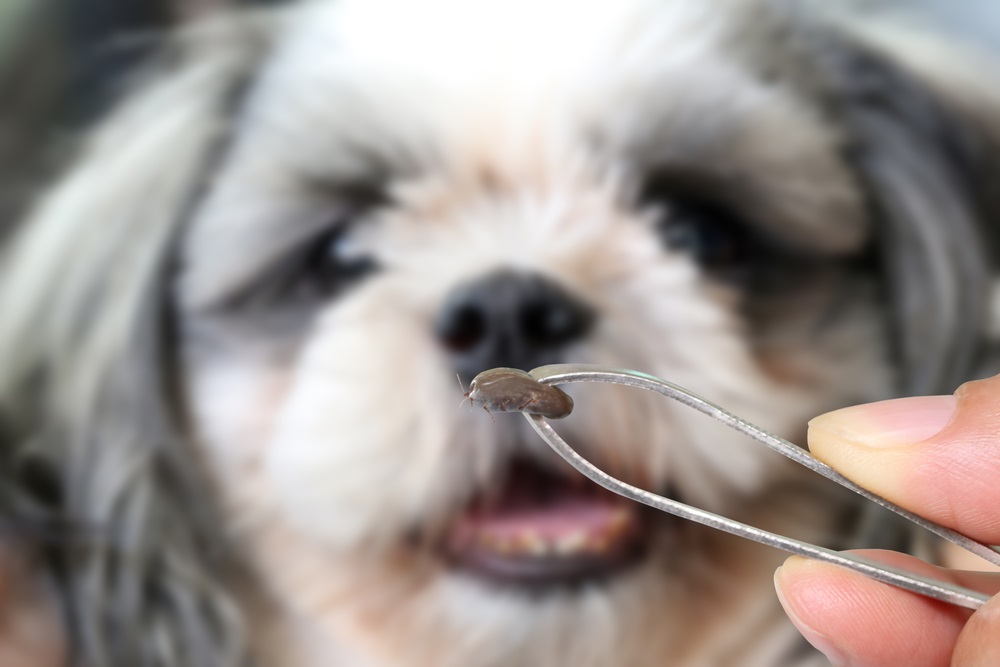How to Get a Tick Off a Dog with Dish Soap
Ticks have got to be one of the most annoying pests around, especially if you are a dog owner who likes to go for walks in the woods and other forested areas. Not only can it be difficult to spot them in your pet’s fur, but it can be equally hard to decide how to go about removing one.
You have to be careful not to leave any part of the tick behind, and it is extra difficult because you are dealing with a potentially wiggly dog!
If you want to try a tick removal method that does not require careful extraction work like tweezers, then keep reading for our guide on how to get a tick off a dog with dish soap.
What Is a Tick?
Ticks are a small bug called arachnids, which means they are related to spiders and have eight legs. Unlike many spiders, however, they feed on blood, which is why they are so attracted to humans and dogs.
Before they start gorging themselves on blood, ticks can be reddish, brownish, or black in color and as small as the head of a pin, and then after feeding for a while, they can turn a greenish-blue color and get to be as big as a marble!
Why Do I Need to Remove Ticks?
Though they may look harmless, and many of them very well can be, ticks can carry a couple of serious illnesses. Perhaps the most well-known one is called Lyme disease. The severity and symptoms of Lyme disease can certainly vary from dog to dog, but most cases cause swelling of the joints and arthritis.
Then, if your dog does not receive treatment, Lyme disease can even spread to the nervous system and heart, causing even more serious problems.
Another tick-related disease that perhaps does not receive the same attention as Lyme disease is Rocky Mountain Spotted Fever (RMSF). If dogs contract RMSF, they may experience symptoms such as muscle, joint, and abdominal pain, digestive issues, fever, cough, and fever.
Then there are ever more diseases with similar symptoms to RMSF, such as hepatozoonosis, Bartonella, babesiosis, and Canine Ehrlichiosis. Low blood platelets also indicate these diseases, so your dog may develop nose bleeds or anemia symptoms.

How Do I Check My Dog for Ticks?
If you have already found one tick on your dog, there is certainly a chance that there could be others hiding on your dog’s body. Follow these steps to ensure that you have located any and all ticks on your dog.
Step 1: Do Your Check Outside
The best place to do a tick check is outside, as your dog may be carrying ticks that have not yet latched on, and you do not want any loose ticks in your home!
Step 2: Comb Through
Press down gently and comb through all of your dog’s fur with your fingers, as you want to be able to feel for any small bumps that may be on their bodies.
Pay special attention to warm, moist places and any folds in the skin, like around the eyelids, inside the ears, under the collar, around the tail, under the front and back legs, and between the paws.
Step 3: Check Bumps
If you do feel a bump, get a closer look. You have likely identified a tick if you can see a reddish, brownish or even black-colored bug. You may even only see its legs if it has already buried itself in your dog’s skin.
How To Get a Tick Off a Dog with Dish Soap
Now that you have located any and all ticks on your dog, it is time for removal. If you do not trust yourself with a pair of tweezers or do not trust your dog to stay still while using tweezers, then follow the instructions below to learn how to get a tick off with dish soap.
Step 1: Gather Materials
- Dish soap
- Water
- Cotton ball
- Tweezers
- Disposable bowl*
- Plastic spoon*
*These do not necessarily need to be disposable, but it is just a good idea to not reuse anything that could be carrying any remnants of a disease-ridden tick.
Step 2: Prepare Bowl and Cover Tick with Dish Soap
Mix some water and dish detergent together in the bowl. Then, soak your cotton ball in dish soap and then use it to cover the tick on the dog’s skin. Wait for at least 30 seconds.
Step 3: Remove Cotton Ball and Drown Tick
Remove the cotton ball – the tick should be stuck to it at this point. Use your tweezers to remove it from the cotton ball and drop it into your bowl of water and dish soap. Let it drown in the water.
Step 4: Clean Skin
Wash the spot where you removed the tick with soap and water, and then apply rubbing alcohol or another antiseptic to your dog’s skin.

Final Note: Save the Tick
While you do not have to save the tick, it is recommended, as it can be tested to see if it was carrying any one of those nasty diseases. Even if the tick was not yet engorged with blood and did not appear to be hanging onto your dog for very long, you do not want to take any chances with letting one of these diseases take hold in your dog.
Transfer the dead tick into a plastic bag or container and take it to your vet or send it to a lab yourself for further testing. If the test results show that the tick was carrying a disease, then get your dog to the vet as soon as possible to decide on the next steps.
The vet may recommend a preventative course of treatment to ensure that the disease does not get the chance to take hold in your dog, even if they are not currently showing any symptoms.
The vet may also recommend a tick prevention medication to help stop this from happening again in the future. This type of medication can prevent ticks from sticking to and biting your dog in the first place and will prevent you from having to go through the ordeal of tick removal!

